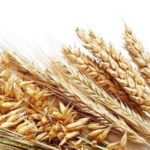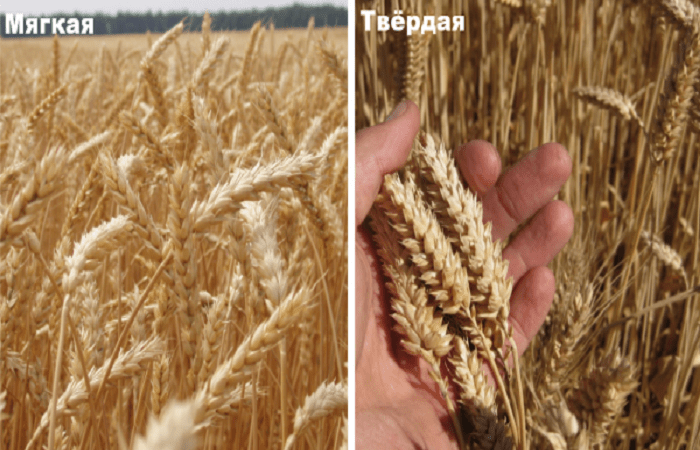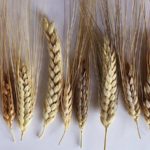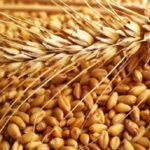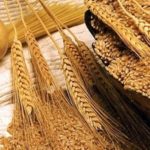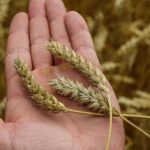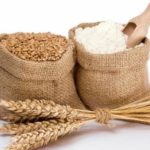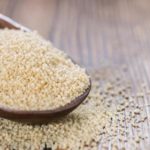Common or soft wheat is a plant of the Monocot class, of the Cereal family. It is a food and feed crop grown on an industrial scale. For the first time, traces of soft wheat were discovered in 5-6 thousand BC. e. on the territory of Turkey, Iran, Iraq. This proves that it is not for nothing that Western Asia, as well as the Near and Middle East, are considered the birthplace of culture. But today it is a highly demanded cereal in all countries of the world.
Features of soft wheat
Bread wheat is a species characterized by a high content of gluten and protein.It has a soft endosperm and starch grains that are easy to crumble during grinding. Often this variety of wheat is used in the manufacture of baguettes, various cookies or sponge cakes.
Soft wheat is characterized by polymorphism. Its cold-resistant varieties are able to germinate even with a persistent drop in air temperature to -10 °C in the spring.
For spring wheat, the total air temperature for the entire growing season should be at least 1300 °C. The crop requires moisture, especially during grain filling. But, in comparison with winter cereals, spring wheat tolerates drought well. Its growing season lasts from 70 to 110 days.
To grow a crop, it is necessary to rationally approach the choice of soil. It cannot fully develop in acidic soil, but is less sensitive to soil salinity. The best option for growing soft wheat is chernozem.
How is it different from solid?
There are clear differences between soft and durum wheat varieties. But there are not many of them, so these types of grains can be easily confused. However, they have a different appearance, a different purpose, and different areas of application.
Appearance
The main wheat varieties are distinguished primarily by appearance. The first category has thin-walled straws, completely hollow inside. In hard varieties, on the contrary, the stems are thick-walled.
In the soft variety of cereal, the grains have a mealy, glassy or semi-vitreous consistency. Their color can vary from white to deep red.
Durum wheat varieties are characterized by the presence of small grains, which, moreover, are harder in structure. They vary in color from yellowish to brown.
Composition and calorie content
Durum and soft wheat varieties have very similar composition. Therefore, in this case they do not have any special differences. Both varieties of cereal contain:
- B vitamins;
- tocopherol;
- retinol;
- ascorbic acid;
- vitamins F and PP;
- calcium;
- phosphorus;
- bromine;
- iron;
- and other important, useful elements.
The difference between these varieties of cereal in terms of calorie content is also small. Soft wheat varieties have an energy value of 305 kilocalories per 100 grams. Solid crops have a nutritional value of 304 calories per 100 grams.
Which one is healthier?
There are also no differences in the beneficial properties of soft and hard types of wheat grain. The identical composition of grain determines similar beneficial properties of crops:
- normalization and maintenance of healthy metabolism;
- regulation of the functioning of the nervous, digestive, cardiovascular systems;
- preventing the accumulation of bad cholesterol while maintaining high-density lipoprotein (HDL, or “good” cholesterol) levels within normal limits;
- stimulation of hormone production;
- maintaining healthy functioning of the adrenal cortex.
On a note! Wheat has a positive effect on the immune system; it is useful during pregnancy because it contains high concentrations of magnesium and pyridoxine (vitamin B6).
Where does it grow?
Wheat, especially its modern varieties, is no longer too picky about climatic conditions. And in its frost resistance it surpasses even potatoes and barley. However, differences between its hard and soft varieties in terms of place of growth still exist.
Where is it used?
It’s not for nothing that bread wheat got its name – soft. Its structure is such that it lends itself well to grinding. This cannot be said about the durum variety of cereal, which has dense grains. They require more careful processing. After milling, the remaining starch from the hard grain is often damaged. This makes the resulting flour unsuitable for use in baking bread.
The difference in the use of wheat of both varieties is presented more clearly in the table:
| № | Wheat variety | Features of application |
| 1 | Soft | The grain contains a specific element - the D-genome, therefore the dough from this type of cereal is highly elastic. It is advisable to use it for baking bread, bakery and confectionery products. It is used for making pancakes and pancakes. It does not stretch well and breaks easily, so it is not suitable for preparing those products that are made from hard grains. |
| 2 | Solid | Dough made from flour of this type of wheat has good extensibility. It is flexible and difficult to tear. At the same time, long pieces of different shapes can be easily made from it. For this reason, in the food industry, durum wheat grains are used to produce special flour. It is used in the manufacture of pasta and “cereals” called couscous. |
Thus, the composition, benefits, and calorie content of both cereal varieties are practically no different from each other.But the properties of the products obtained from them vary significantly.
Popular varieties
The best varieties of bread wheat today are:
- Favorite. A medium-sized plant, the ripening period of which lasts from 283 to 287 days. It tolerates frost well, but is not highly resistant to drought.
- Shestopalovka. The winter wheat variety was developed in 2007. The ripening period lasts 280-285 days. The plant can reach 90 cm in height.
- Antonovka. The variety was bred in 2008. Characterized by rapid ripening (no more than 285 days). The plant is medium-sized, can grow up to 95 cm in height. The weight of the grain ranges from 0.036 to 0.044 g.
There are also many popular varieties of bread wheat that are characterized by high yields. They are used by both large agricultural companies and small private farms.
Harm and contraindications
Wheat can be harmful to health if consumed by people who have contraindications to taking the grain. Culture is prohibited when:
- exacerbation of nonspecific ulcerative colitis;
- hyperfunction of the endocrine glands;
- tumor diseases;
- individual intolerance to the product.
Diabetics should also be careful. They are allowed to consume wheat products in rare cases and in minimal quantities.

